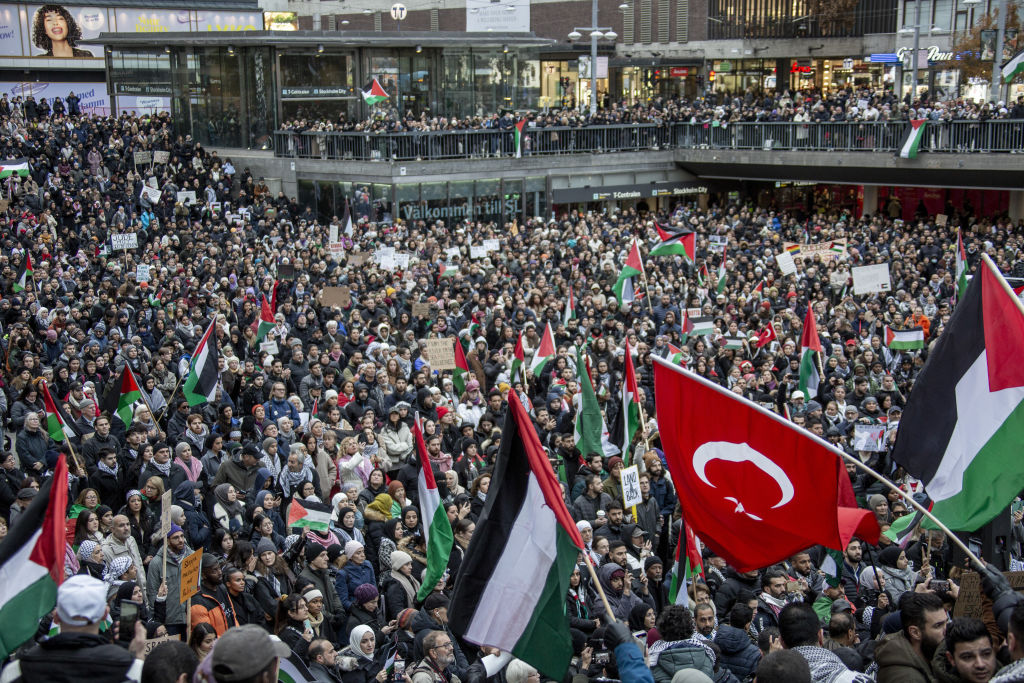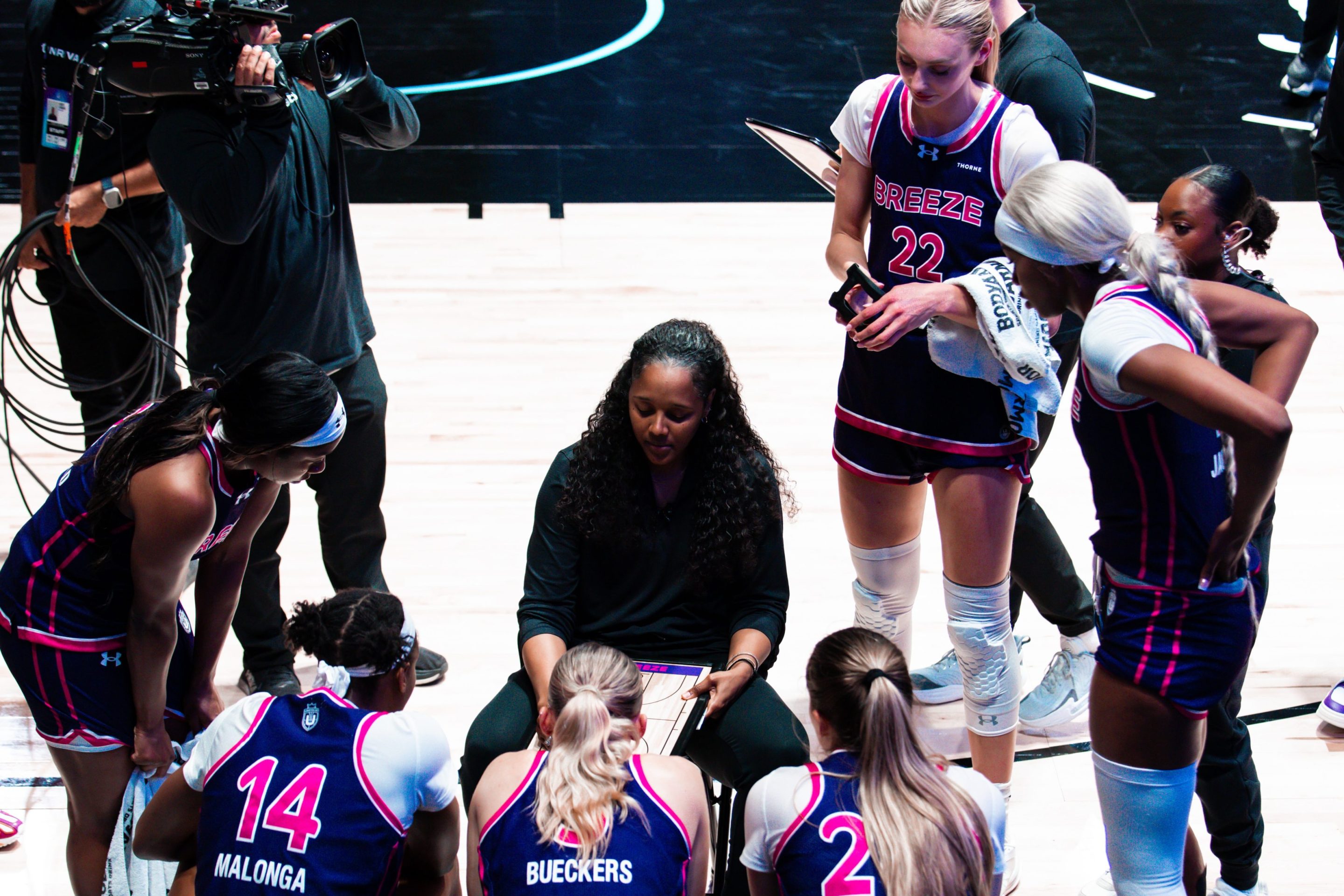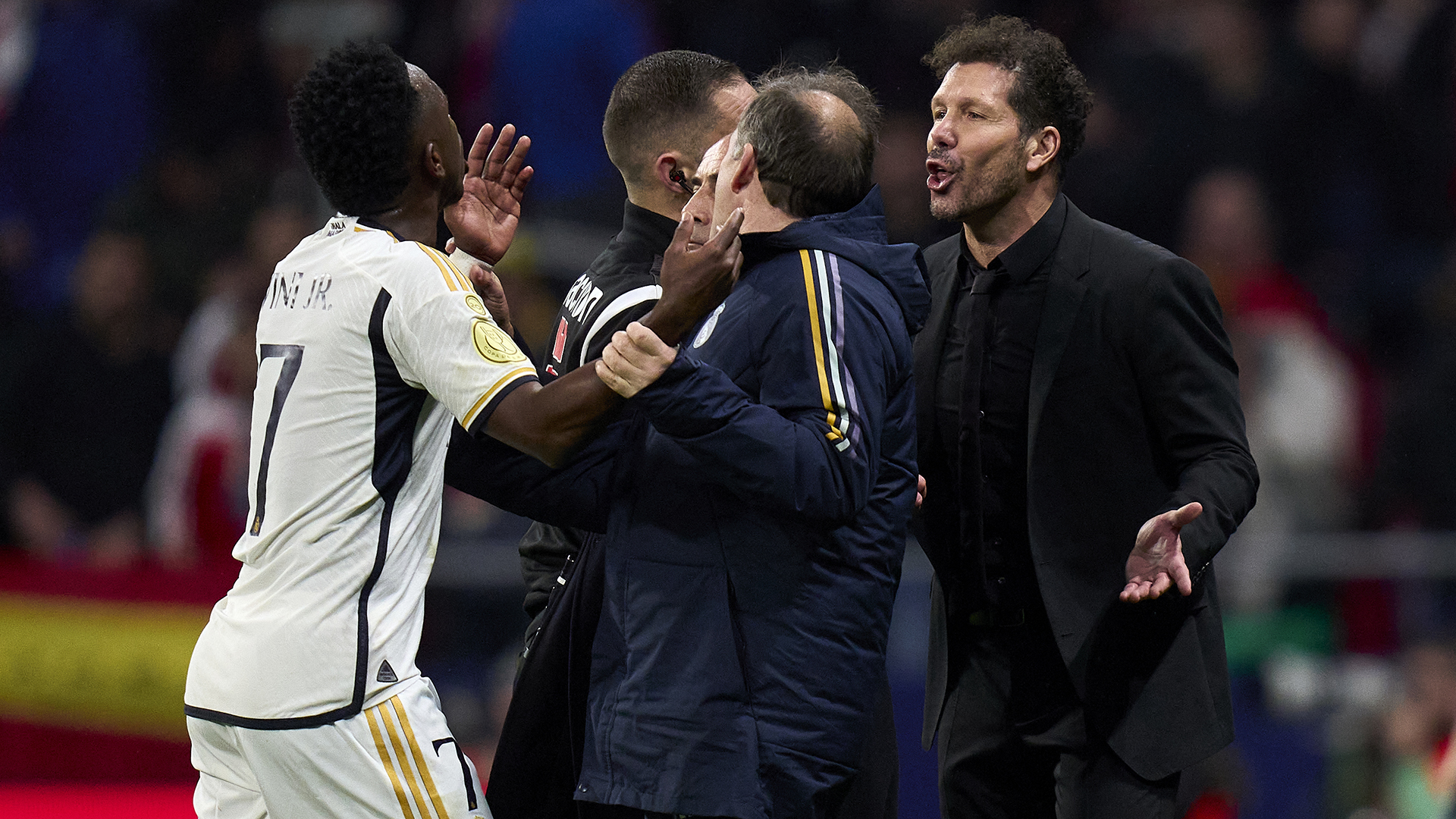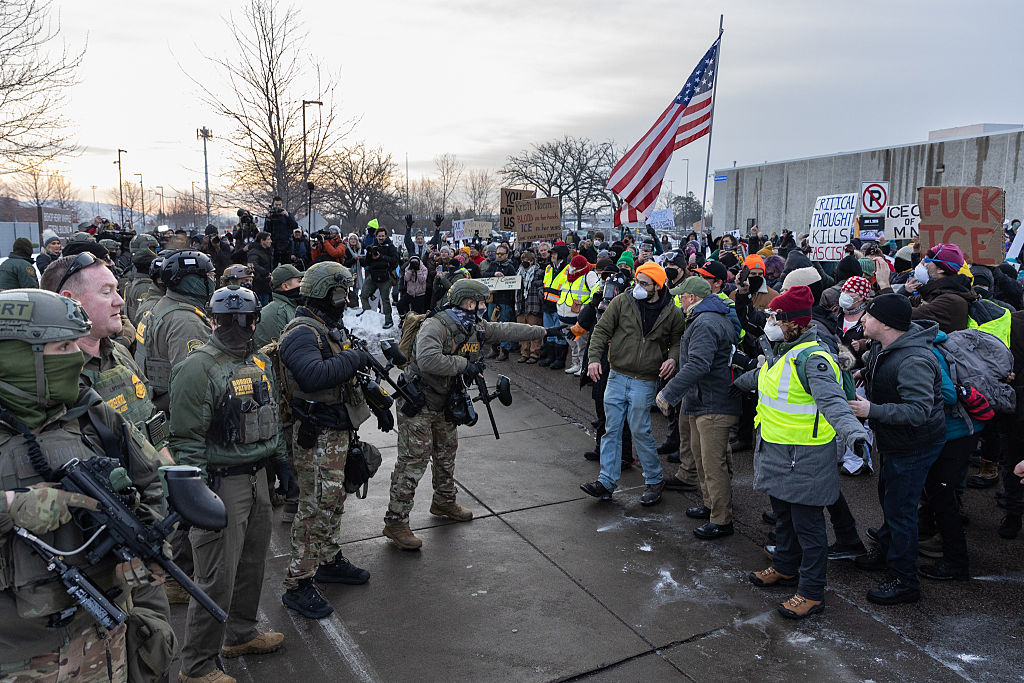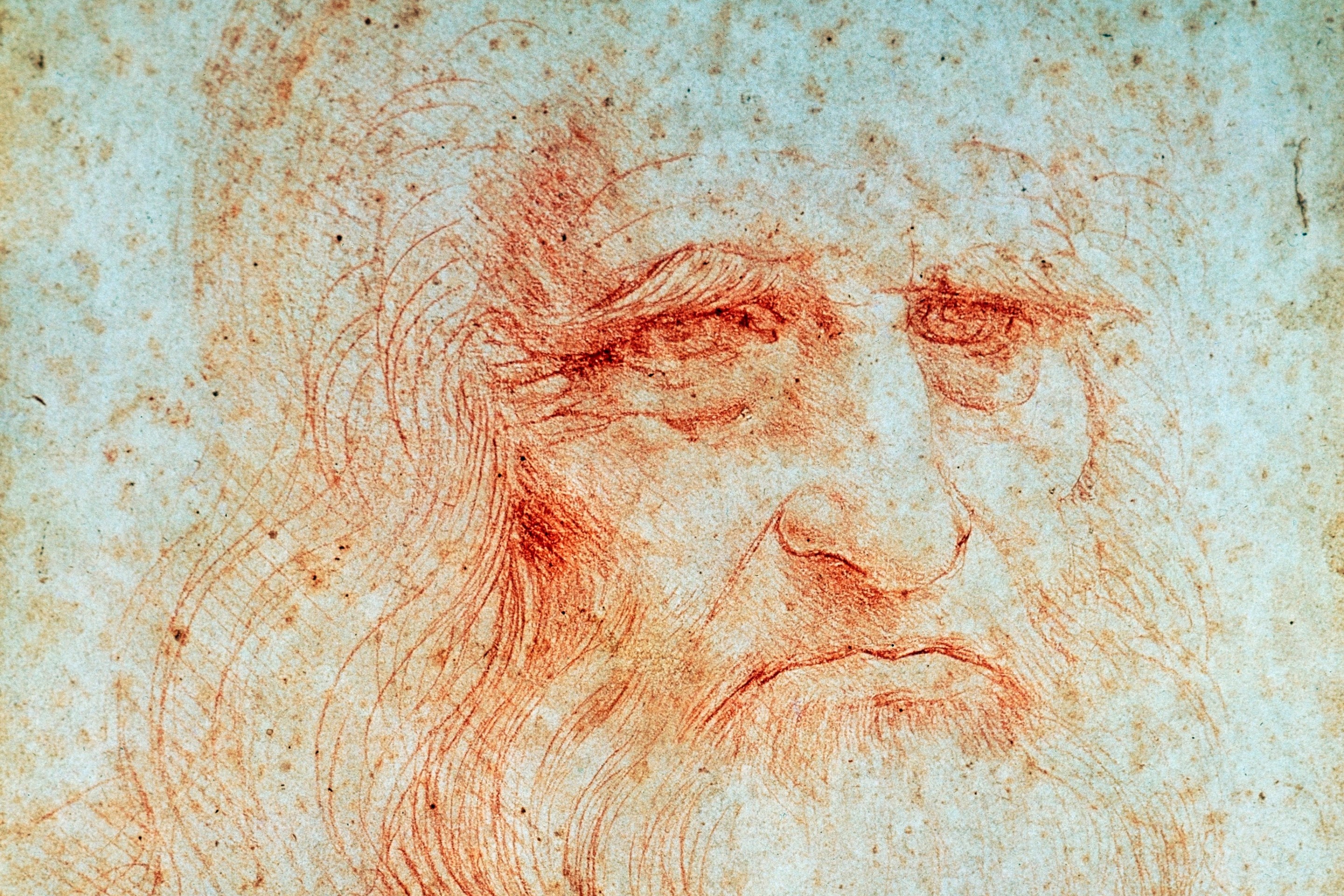The rally began at 6:00 p.m., which meant the pigs started gathering around 4:30 p.m., first in a gaggle of patrol vehicles on a nondescript back street, then in a line standing around in high-visibility vests on the main road where the march would take place. The rally was held downtown on Oct. 17, off Las Vegas Boulevard and Clark, which meant the Nevada Supreme Court and the Federal Courthouse and the civil marriage center were just around the corner. On my lunch break, I’d seen bright orange security fences locked in place on the street and, just beyond, excited, drowsy, hungover, businesslike couples jaywalking to the marriage center to get their marriage certificates.
Those streets, lined with government buildings, were now empty. Snipers set up on rooftops near the rally, burly JSOC wannabes with dark beards, flipped camo caps, plate carrier vests, and binoculars, every one of them looking alternately bored and ready to shoot. ICE personnel circled the block—two agents, a man and a much shorter woman, with rifles slung over their chests, following a sniffing hound. Metro PD had helicopters flying circuits around the area, intermittently hovering just out of sight of the demonstration, before whirling round again.
Earlier that Tuesday, an explosion outside Al-Ahli Hospital killed hundreds of people, according to the Gaza health ministry. That was why we were there. "People were flying—whole bodies, body parts," one eyewitness told Sky News. "There was a guy on fire just here. I was not as upset for my family as I was for that man who was burning in front of me." Israel and the IDF denied responsibility, instead blaming the explosion on a misfired rocket from the Palestinian Islamic Jihad.
Al-Ahli Hospital was just one point on a long and bloody timeline, during which Gazans have been killed, displaced, and brutalized by American-backed Israeli forces. That timeline also includes Israel’s decision to cut off resources to the Gaza Strip, to force half of its population to relocate to the south, and to kill thousands of Gazans through ceaseless bombing raids. The occupation has swallowed generations of Palestinian lives. And yet, as Tareq Baconi at the Palestinian policy institute Al-Shabaka pointed out to The New Yorker in an interview after this month’s Hamas attack, “This is the first time I have been interviewed by The New Yorker, and it’s happening because Israelis were killed. What happened when Palestinians were killed in the thousands, just in the fifteen years that I’ve been covering Hamas?”
By 5:30 p.m., I had started walking short laps around the rally site. Back in the summer of 2020, one of several marches against police brutality took place in this area. I remember the heat, the covered faces (some of which I saw again the night of the rally), and the fact that Metro blackbagged people off the street near the end of the demonstration, whether they were protestors or not.
The immediate moments prior to a demonstration—an hour, half hour, or 10 minutes—can be fraught and uncomfortable. One cases the scene and sees what looks like nothing more than a handful of participants. This in itself doesn’t have to mean much; there is strength in numbers, and a strength of conviction in showing up at all (also, the fear that an outward appearance of weakness could serve to undermine the issue). The pro-Palestine side of the rally on Las Vegas Boulevard, our side, set up in front of the Federal Courthouse, a massive building with towering metal pillars that was built over 10 years ago but still looks brand new. Reporters milled around with cameras on tripods off to the side of the wide sidewalk, where a long row of concrete benches were occupied by strangers in surgical masks and keffiyehs. On the opposite side of the street, a contingent of pro-Israel demonstrators began to arrive, staging Israeli flags crossed with U.S. ones.
Fifteen minutes before the rally started, I went and sat in a vacant spot on the concrete bench outside the courthouse, watching supporters on both sides trickle in. Cars drove by in the twilight. I noticed that the people with guns were all facing our direction. A guy in an orange t-shirt and dress pants, with earbuds in, leaned over to me and asked, “Do you think they really believe all that?” He nodded to the pro-Israel side, all dressed in white, with printed signs carrying messages like “My broken heart stands with Israel.” I asked him what he thought. The guy—let’s call him Tom—said he wasn’t sure if they were sincere or just delusional. I asked Tom why he had shown up that night. “Injustice," he said. "This is the first protest I’ve been to, period. Something about this feels different.” Tom was black, muscular, but unassuming. The image of him marching before this didn’t come easily. I was glad he came.
We kept talking in the intervening minutes as more people showed up with Palestinian flags, all-black outfits, water, small children, and more signs. On the perimeter of the crowd, a man prayed toward the qibla. I recognized a kid in glasses and a black face mask from an earlier demonstration; he always brings a medical kit with a hand-stitched patch that says “I have Narcan.” There were self-identified anti-occupation Jews and American veterans. An old friend from Egypt, who I hadn’t seen in almost a year, arrived with her young daughter. We hugged warmly. “This is so embarrassing,” my friend said, looking on as the pro-Israel contingent began chanting, “Shame on you!” Just before 6:00 p.m. the rally had filled out considerably, always with others streaming in from around the corner or far down the street. The cops standing in a line between us and the other side had straightened up.
“To see the world through a child’s eyes, and then to have the actual, blood-soaked machinery of history and politics unveiled is a shock," Hamilton Nolan recently wrote on his Substack. "It prompts an urgent desire to do something in anyone with a conscience … Older people who have lived through more things and read more books often mock this moral clarity as the product of childish, unsophisticated minds. Yet that judgment is itself a product of fear, of weakness, of the very human need to justify ourselves to ourselves.” With the full militaristic weight of American law enforcement leaning in our direction, it was impossible to shake the sense that an invisible and stern paternal finger was being waved at us. That the pro-Palestine side of the street carried more conspicuous diversity than the pro-Israel side felt almost too obvious a visual signifier of the difference in circumstance and priority. The pro-Israel group, in a bid for some semblance of a unified chant, eventually began shouting, “USA! USA! USA!”
There is fire in a crowd, the undeniable feeling that, with enough bodies around you shaking hands, holding placards, kissing cheeks, and slapping backs, nothing is impossible. The flames can be dampened by people posing for photographs and screen-addicted posters filtering a political gathering through the lens of comfort and convenience, but none of that spells a legitimate deterrent for participation. Something must be risked at some point. The very fact that there has been an institutional culture of silence and retaliation against those who express support for Palestine and criticism of Israel points to how real that risk is. Meanwhile, those who oppose public demonstrations that undermine the status quo, who oppose speaking out at all, point to a dark insurgency, to idiot kids with dyed hair, to whining losers who deserve to be mocked or killed.
At the rally, a young Palestinian man stood on a circular stone sculpture, microphone in hand, ready to begin. Music from portable speakers blared across Las Vegas Boulevard, upbeat Hebrew and Arabic songs used as weapons to drown out sound. We were surrounded by Palestinian flags and students and people who had just gotten off work. A tight group of tall young men dressed in black hoodies and cargo pants looked furtively around the crowd, monitoring the police, sussing out troublemakers. This was an engaged, responsive congregation. I felt that if I were to collapse, or be struck, or suffer a panic attack, I would be flooded with concern and practical care. The man speaking told us about his parents, who were forced to flee Israel during the Nakba in 1948. “Their son stands before you tonight,” he announced. The mic continued to be passed around. We ebbed in and out of chants shouting, “From the river to the sea, Palestine will be free.”
I have been to very few demonstrations in my adult life, far fewer than friends who live their lives as organizers and union stewards. I vacillate between disappointment and an uncertain emotion that isn’t quite ambivalence about this fact. I try to combat how easy it would be to wallow in a decision I myself have made many times over, which is the decision not to participate. At the rally, my friend from Egypt handed me a sign with a hand-drawn Palestinian flag and “Free Gaza” written in a skinny, near-cursive. Many times before then, I have been plagued by an embarrassment of being conspicuous in a crowd. I think this is partly why so many people don’t show up, or, if they do, they do so solemnly, without visible agitation or fervor. Amidst a sea of heightened, raw energy and action, it can seem, to the self-conscious participant, better to appear sane, collected, not a threat. I realize now that this is an even greater embarrassment. What is the point of cautious solidarity? What good is a wincing, helping hand? We all have to wield our own measuring sticks; we have to wield them honestly and so there is no general answer to the following questions: Is it actually enough just to be there, to stand and listen, then walk away before things get messy? Is it a matter of time management, of putting in an outward effort of participation, and being satisfied with whatever seems superficially difficult? Why are you really there?
The rally began to move. Two giant Palestinian flags led the procession down to Fremont Street. The pro-Israel side kept playing their music, kept waving flags. Of course, they were also more apt to speak to the police.
My new friend Tom, who seemed unsure of staying throughout the gathering when I first talked to him, marched in the throng. Each time I saw him, he had a newer, bigger sign in his hands. Onlookers paused, some gawking, some cheering in jest. An unhoused man who had been sitting in a fugue state on one of the benches before we arrived now wandered throughout the crowd, a banner held loosely in one hand. A white pickup truck with a Palestinian banner did laps around the block, honking as it passed (at one point before the march started moving, someone announced that the cops had begun pulling over other vehicles showing support).
This was not the first pro-Palestine demonstration in Vegas. The local DSA chapter had hosted political education seminars and letter-writing sessions, and there had been a rally right after the Hamas attack. In the days immediately following the attack, when so many of those who spoke up in the hopes of preventing further loss of innocent life were tarred as antisemites or called “repugnant,” it was hard to imagine Palestinian solidarity finding much more of a foothold here in a country where Israeli interests hold such sway. While I marched, Baconi’s words about only being asked to talk to a legacy publication after Israeli deaths stayed in my head. I also thought about what Frantz Fanon wrote in The Wretched of the Earth: “It so happens that the unpreparedness of the educated classes, the lack of practical links between them and the mass of the people, their laziness, and, let it be said, their cowardice at the decisive moment of the struggle will give rise to tragic mishaps.” But the crowd was growing, and I doubted that Tom was the only freshly motivated participant. Through that weekend, tens of thousands came together in Chicago, Los Angeles, New York, and other cities around the world.
The possibility of meaningful solidarity with the people of Palestine feels as real as it ever has in my lifetime, but possibility is fleeting. In order to survive, solidarity has to cross the ebb and flow of global attention, of noise and assuredness. As for where that solidarity should be directed, Israel’s defense minister Yoav Gallant recently made it plain. According to the Times of Israel, when pressed during a strategy meeting to explain why Israel had allowed some humanitarian aid into Gaza, he replied, “The Americans insisted and we are not in a place where we can refuse them. We rely on them for planes and military equipment. What are we supposed to do? Tell them no?”
